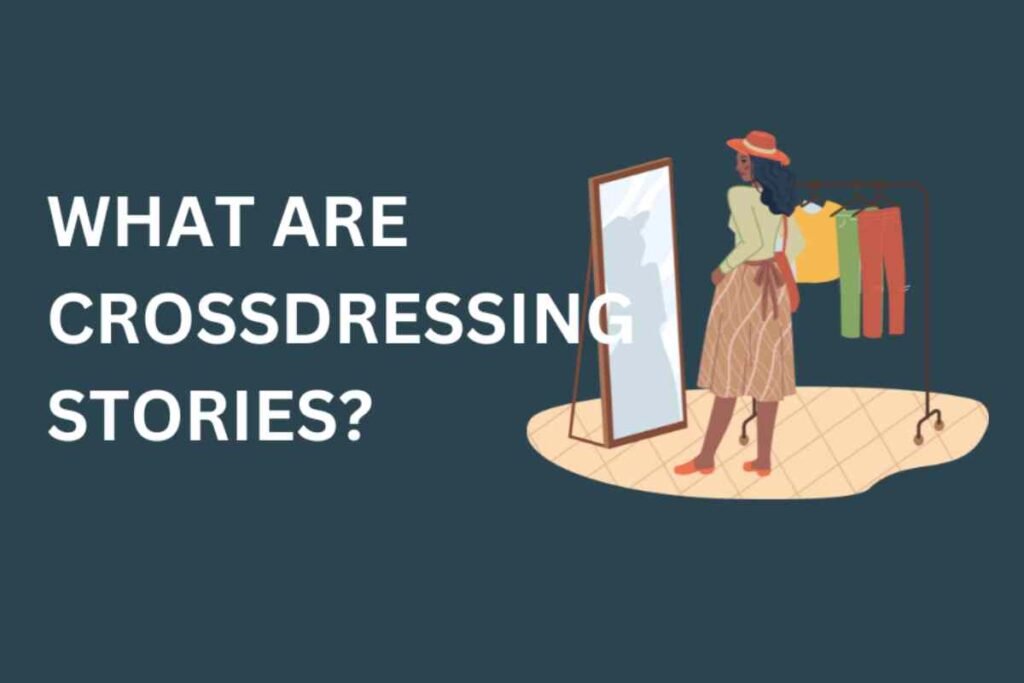Crossdressing stories have gained immense popularity online, captivating readers with fascinating tales of transformation, identity, and self-discovery.
Whether it’s a journey of self-acceptance, a thrilling adventure, or a romantic fantasy, crossdressing fiction offers something for everyone.
This article explores the best crossdressing stories, including free crossdressing , transformation stories, and experiences that will leave readers hooked.
What Are Crossdressing Stories?

Crossdressing stories are narratives where individuals explore identity, fashion, or societal roles by dressing in clothing traditionally associated with another gender.
These tales are often intriguing, emotional, or humorous and appeal to readers who appreciate themes of self-expression and acceptance.
Types of Crossdressing Stories
Crossdressing Stories Online:
The internet has become a hub for diverse crossdressing fiction. From real crossdressing stories to crossdressing erotica (used carefully according to platform guidelines), there’s a vast variety of stories to explore.
These tales often delve deep into the psychology of crossdressing, exploring themes of identity, self-discovery, and the challenges people face in expressing themselves.
Whether you’re looking for crossdressing romance stories or something with a transformation twist, online platforms offer a treasure trove of material.
Crossdressing Transformation Stories
These stories are centered around the transformation of characters, either physically or emotionally. Crossdressing transformation stories often involve a character who embarks on a journey of self-exploration and identity transformation.
Whether it’s through magical means, technology, or simple self-realization, these stories can be both captivating and inspirational.
Crossdressing Experiences Stories
Real-life experiences and fictionalized accounts of individuals experimenting with crossdressing are another popular category.
Real crossdressing storie often feature people sharing their personal journeys, struggles, and triumphs. These stories can offer a unique perspective on the emotional and psychological impact of crossdressing.
Popular Indian Crossdressing Stories
In India, crossdressing storie have deep roots in folklore, mythology, and modern storytelling. Indian crossdressing explore themes of bravery, love, and identity.
One famous example is Shikhandi from the Mahabharata, a character who embraced crossdressing to fulfill a destiny.
Transitioning to contemporary narratives, many authors and bloggers share personal crossdresser sex stories that delve into identity and relationships.
These stories provide a modern lens on crossdressing, breaking stereotypes and creating a sense of community.
Themes in Crossdressing Stories
Crossdressing Stories About First-Time Experiences
A popular theme in crossdressing fiction is the first-time experience. These stories typically focus on a character’s initial venture into crossdressing, filled with excitement, apprehension, and self-discovery.
They may explore how the character feels when stepping into a new identity and the emotions tied to that transformation.
Crossdressing Stories About Forced Crossdressing
While sensitive, crossdressing storie about forced crossdressing can be found in certain niches of the genre.
These tales often deal with themes of power, submission, and control, exploring how a character might navigate a situation where they are forced to crossdress.
These types of stories require careful handling to maintain respect for all involved.
Crossdressing Stories About Acceptance
One of the most powerful themes in crossdressing fiction is the idea of acceptance. These stories often depict a character’s journey toward self-acceptance, exploring their struggle to embrace their true identity, whether societal norms accept it or not. Stories of acceptance often resonate deeply with readers and can be transformative.
Forced Crossdressing Stories
One intriguing subset is forced crossdressing stories. These narratives often explore themes of transformation under duress, leading to self-discovery.
For instance, a character might be compelled to crossdress for survival, only to embrace a new identity along the way. While the premise may seem dramatic, these stories often have empowering conclusions.
Crossdressing Stories in Malayalam
Crossdressing storie in Malayalam reflect the state’s rich storytelling tradition. These tales often explore social issues, using crossdressing as a lens to critique societal norms.
For example, a Malayalam story might follow a character who crossdresses to secure a job, revealing the struggles of marginalized groups in society.
Malayalam literature and cinema frequently portray crossdressing with sensitivity and depth, making these stories a favorite among fans of regional narratives.
Real-Life Crossdressers’ Stories
Real-life stories of crossdressers inspire readers by showcasing courage and authenticity. Platforms like YouTube and personal blogs often feature individuals sharing their crossdressing journeys. These stories not only break taboos but also foster understanding and acceptance.
A famous example includes interviews with Indian crossdressers who discuss their struggles and triumphs. Such narratives are not just stories; they are powerful testaments to the human spirit.
Why Are Crossdressing Stories Important?
Crossdressing stories resonate because they challenge societal norms and celebrate individuality. They offer readers a window into lives different from their own, fostering empathy and understanding.
Transitioning from traditional tales to modern accounts, these stories connect readers across languages and cultures.
Exploring Crossdressing Stories Online
If you’re intrigued by crossdressing stories, there are countless resources online. Websites dedicated to personal experiences, fiction platforms, and even forums host stories in Hindi, Tamil, Telugu, and Malayalam.
For example, a quick search for “crossdressers story Hindi” or “Telugu crossdressing stories” can lead to captivating tales.
Transition words like “however” and “moreover” help navigate these sites easily, ensuring an enriching reading experience.
Conclusion
Whether you’re into crossdressing romance stories, transformation tales, or stories of self-discovery and acceptance, the world of crossdressing fiction is vast and varied.
By exploring different genres and themes, such as fantasy crossdressing stories, historical crossdressing stories, or even sci-fi crossdressing stories, you can find engaging stories that speak to your interests and provide an exciting escape.
FAQs
What are these stories about?
They explore identity, societal roles, and self-expression through unique narratives.
Why are such tales popular in India?
They blend cultural traditions with modern themes, making them relatable and engaging.
What is the cultural significance of these stories?
They often reflect deep-rooted beliefs, folklore, and the evolving perspectives of society.
Are these stories based on real-life experiences?
Some are fictional, while others share genuine accounts from individuals.
How are these stories portrayed in regional literature?
They are often celebrated for their emotional depth and cultural richness.
What themes are commonly explored?
Common themes include courage, self-discovery, humor, and family dynamics.
Where can readers find more of these tales?
Online platforms, blogs, and regional literature are great sources for diverse narratives.
Why are these stories important to society?
They foster understanding and empathy while challenging traditional norms.







